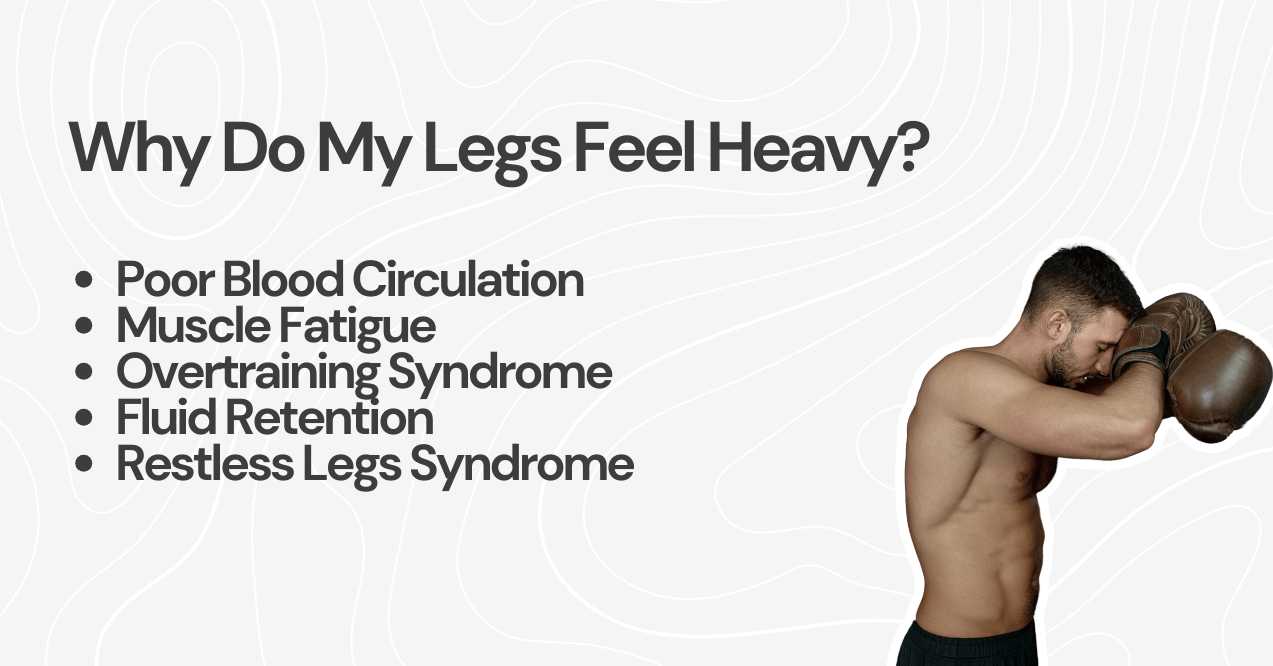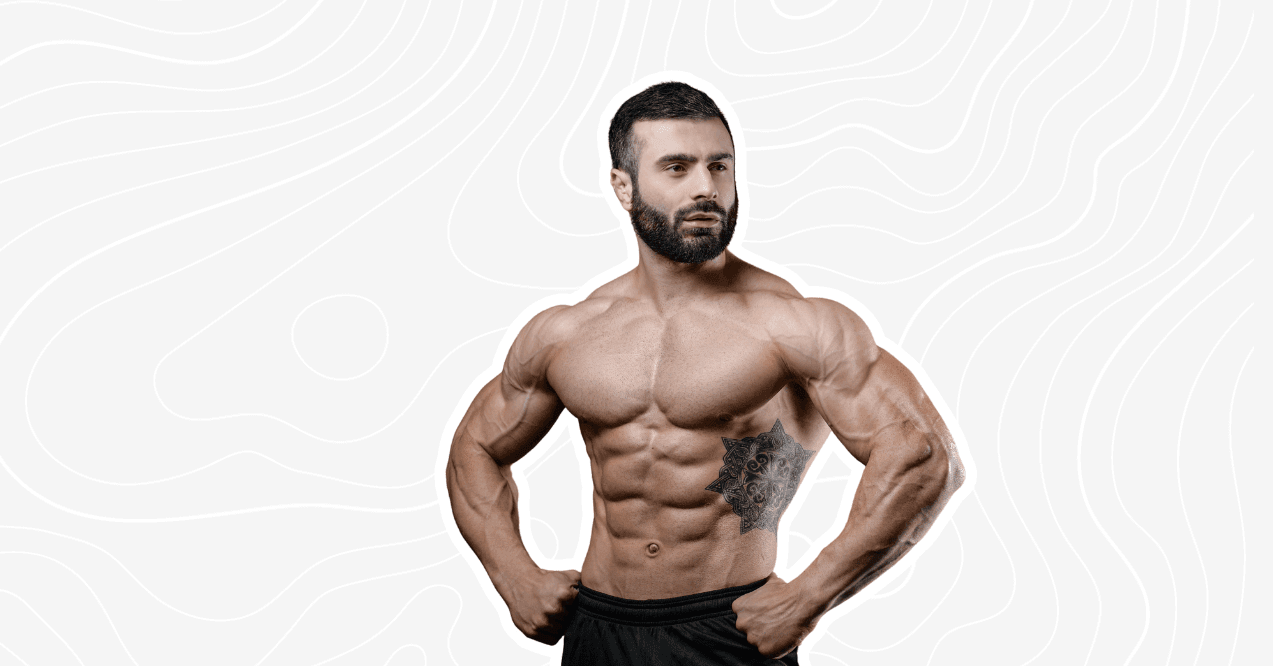Why Are My Legs So Heavy After a Workout?
Feeling your legs so heavy after a workout can be an unsettling experience, leaving you wondering what went wrong. Some people wonder, how often should I go to the gym? Maybe I’m going to the gym too much? This sensation is surprisingly common, particularly after intense or prolonged physical activity. While often temporary, heavy legs may result from a variety of factors, including changes in blood flow, muscle exhaustion, or fluid balance in the body. To speed up your recovery, muscle recovery supplements like electrolytes, protein, and branched-chain amino acids (BCAAs) may help ease muscle fatigue and aid in muscle repair. Understanding the potential causes can help you take steps to support your recovery and maintain a more comfortable post-exercise routine. recovery and maintain a more comfortable post-exercise routine.
Key Article Findings

Why Do My Legs Feel Heavy? Causes of Heaviness After Working Out

Wondering why do my legs so heavy after workout? Feeling heavy legs after a workout can be attributed to various factors related to how your body responds to physical exertion. These include changes in circulation, muscle recovery, and energy depletion. Understanding the causes can help you manage this common post-workout sensation and support your recovery.
1. Poor Blood Circulation
Exercise increases blood flow to your muscles, but when circulation is inefficient, it can leave your legs feeling heavy and fatigued. This often happens when the veins struggle to return blood to the heart after an intense workout or prolonged physical activity. Proper hydration and nutrients that support vascular health are essential for maintaining optimal circulation.
For example, collagen and bone broth together provide amino acids and other nutrients that may augment blood flow and promote recovery. Wondering how much collagen is in bone broth? The amount depends on the recipe, but it’s often a significant source of this vital protein, which supports vein and joint health.
2. Muscle Fatigue
Muscle fatigue occurs when your muscles are overworked, leading to a temporary decline in their ability to perform. It’s often caused by intense physical activity or prolonged exertion. This fatigue can contribute to a sensation of heaviness in the legs, making movement feel more challenging. As muscles tire, they struggle to maintain strength and endurance, signaling the need for rest and recovery.
One way to support faster muscle recovery is through herbs for muscle recovery. Certain natural herbs, such as turmeric, ashwagandha, and ginger, are known for their ability to help reduce muscle soreness and promote overall recovery.
3. Overtraining Syndrome
One of the potential causes of heaviness in legs after working out is overtraining syndrome. This occurs when the body is pushed beyond its ability to recover, often due to excessive exercise without adequate rest. Overtraining can lead to chronic fatigue, reduced performance, and a persistent feeling of heaviness in the legs.
Without time for recovery, your muscles and energy systems struggle to repair, making even simple movements feel more challenging. Incorporating rest days and balanced nutrition can help maintain your workout routine without overburdening your body.
4. Fluid Retention
Another reason for heavy feeling legs after a workout is fluid retention. Exercise can cause blood vessels to expand, leading to increased fluid accumulation in the legs, especially if you remain standing or seated for long periods afterward. This extra fluid can contribute to swelling and that familiar sensation of heaviness. Elevating your legs after exercise can help reduce this issue, allowing fluid to redistribute more effectively.
5. Restless Legs Syndrome
Restless legs syndrome can cause an uncontrollable urge to move your legs, often accompanied by heaviness or discomfort after exercise. Though the exact cause is unclear, it’s linked to muscle strain or temporary imbalances post-workout.
Common Symptoms of Heavy Legs After a Workout

Recognizing the symptoms of heavy legs can help you identify whether the sensation is due to temporary muscle fatigue or other factors like circulation or fluid retention. Here are common signs to watch for when your legs so heavy after workout cant walk or move easily.
Aching
A dull, aching pain is one of the most noticeable symptoms of heavy legs. This discomfort often results from muscle strain or overuse during a workout. The ache may linger for hours as your body works to repair and recover.
Tiredness
Tiredness in the legs signals muscle fatigue from overexertion. After intense exercise, the muscles may feel sluggish and unresponsive, leaving your legs so heavy after workout that simple movements feel challenging. This is a natural part of the recovery process as your body replenishes energy stores.
Swelling
Swelling in the lower legs or ankles is another common symptom. It occurs when fluid accumulates due to physical strain or poor circulation, often making the legs feel tight and heavy. This can be more noticeable after workouts that involve standing or repetitive lower-body movements. Elevating your legs and wearing compression socks can help manage swelling and support recovery.
Tingling in the Legs
A tingling sensation can accompany heavy legs, caused by temporary nerve compression or circulation issues during or after exercise. This pins-and-needles feeling is often harmless and subsides with rest or movement to improve blood flow.
Home Remedies for Heavy Legs
Effective home remedies can help ease post-workout leg heaviness and support faster recovery. These methods focus on improving circulation, reducing swelling, and promoting muscle repair. Below are simple yet impactful strategies to address treatment for heaviness in legs after a workout.
Elevate Legs
Elevating your legs above heart level is one of the easiest ways to improve circulation and alleviate heaviness. This position helps blood flow back to the heart, reducing swelling and relieving discomfort. Ideally, aim to elevate your legs for 15-20 minutes after exercise.
Stop Smoking
Smoking negatively affects circulation, making it harder for your body to recover after intense physical activity. Poor blood flow caused by smoking can exacerbate leg heaviness and prolong muscle fatigue. Quitting smoking not only promotes better circulation but also enhances your overall recovery and performance over time.
Rest
Rest is a cornerstone of recovery when dealing with heavy legs. Allowing your muscles time to repair and rebuild after strenuous exercise can prevent overtraining and reduce the sensation of heaviness. Incorporate rest days into your routine and listen to your body to avoid unnecessary strain.
Wear Compression Socks
Compression socks are a practical solution to address the treatment for heaviness in legs. These specially designed socks apply gentle pressure to the legs, improving blood flow and preventing blood from pooling in the lower extremities. Wearing compression socks after exercise can also reduce swelling and provide relief from the sensation of heaviness. Choose a pair that fits well and offers the appropriate level of compression for your needs.
Get Enough Physical Activity
Regular exercise is essential for maintaining healthy circulation and muscle strength, both of which help reduce the sensation of heavy legs. Consistent physical activity improves blood flow and prevents fluid buildup in the lower body. It’s also important to balance movement with proper recovery. If you’re wondering, can you drink protein shakes without working out, the answer depends on your goals. While protein shakes can support muscle repair, combining them with regular exercise enhances their benefits and helps you avoid the discomfort of leg heaviness over time.
Moreover, cncorporating a somatic workout plan into your routine can help alleviate the sensation of heavy legs after exercise. Somatic exercises focus on mindful movement and body awareness, which can improve circulation and reduce muscle tension. By engaging in gentle, intentional movements, you may enhance your body’s natural recovery processes, leading to lighter-feeling legs post-workout.
If you’re looking for additional support to ease heavy legs after a workout, Trumeta Recovery offers a thoughtful blend of nutrients to help. Ingredients like Magnesium, known to reduce muscle cramps and soreness, and Tart Cherry Fruit Extract, which delivers antioxidants to speed up recovery, make it an excellent option.

By supporting muscle repair and reducing post-exercise fatigue, this recovery formula helps you feel ready to move again faster. Add Trumeta Recovery to your post-workout routine for a natural, effective way to promote recovery and support muscle health.
Conclusion
Feeling your legs so heavy after workout is a common experience caused by factors like poor circulation, muscle fatigue, or fluid retention. Recognizing symptoms such as aching, tiredness, swelling, and tingling can help you address the issue effectively. Simple home remedies, including elevating your legs, wearing compression socks, and incorporating rest, can support recovery and alleviate discomfort. By understanding the causes and applying these strategies, you can reduce leg heaviness and enjoy a smoother path to fitness.
Heavy legs when lying down may result from poor circulation or fluid buildup in the lower body after exercise. Elevating your legs briefly can help improve blood flow and alleviate the sensation of heaviness.
Elevating your legs for too long can reduce blood supply to the lower limbs, causing tingling or numbness. Stick to 15-20 minutes at a time to maximize circulation benefits without discomfort or potential side effects.
If heavy legs persist, worsen, or are accompanied by severe swelling or pain, consult a healthcare professional. Temporary heaviness is usually normal, but persistent symptoms may signal an underlying issue requiring attention.
Advertisement. This site offers health, wellness, fitness and nutritional information and is designed for educational purposes only. You should not rely on this information as a substitute for, nor does it replace, professional medical advice, diagnosis, or treatment. If you have any concerns or questions about your health, you should always consult with a physician or other health-care professional. Do not disregard, avoid or delay obtaining medical or health related advice from your health-care professional because of something you may have read on this site. The use of any information provided on this site is solely at your own risk.







